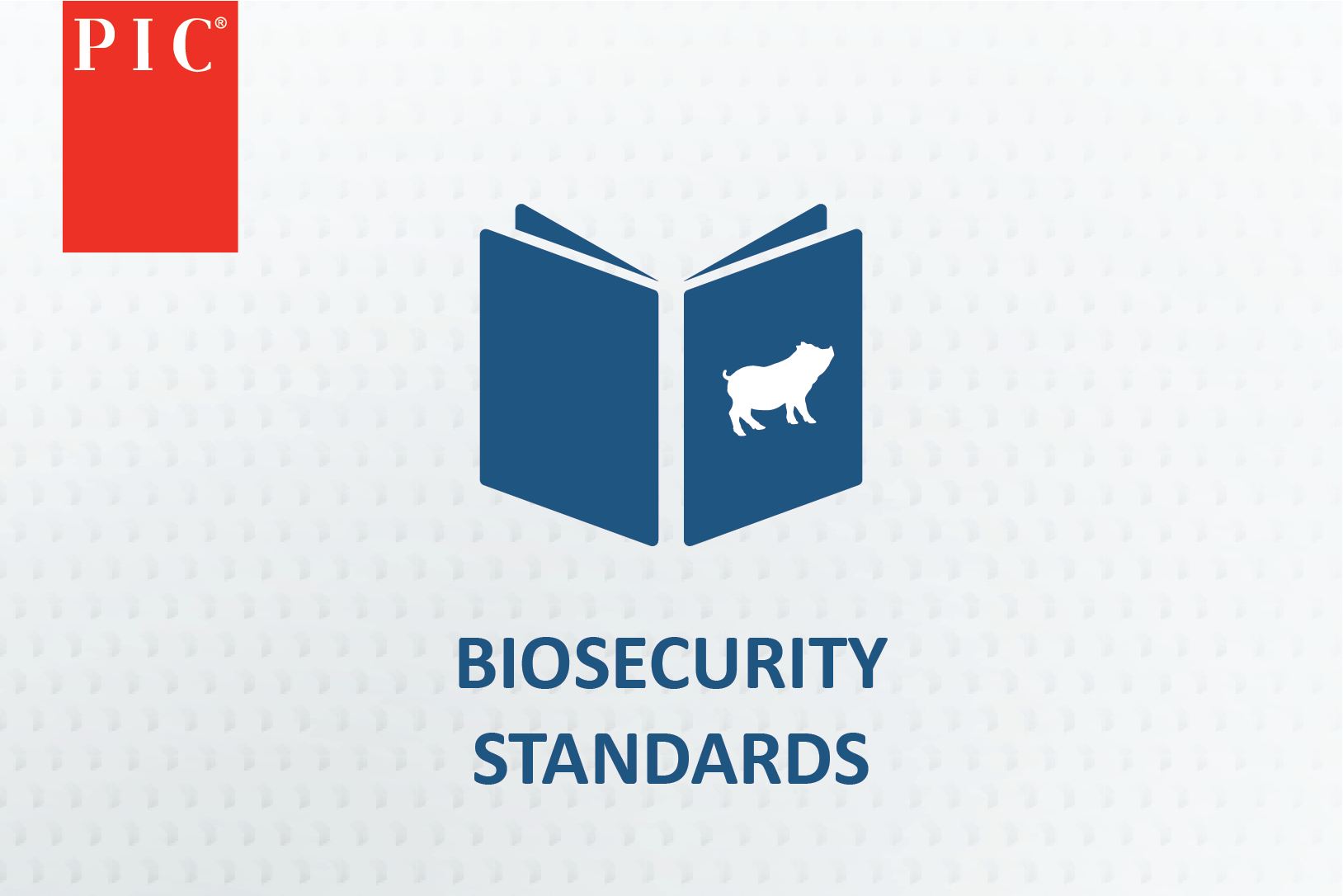As the summer months wane and cooler temperatures arrive, biosecurity should be at the forefront of your mind. Much like the flu in human populations, many farm biosecurity risks are tied to seasonal conditions. Shifting wind patterns, rainfall, snow and changing temperatures can impact disease spread.
As PRRS, African Swine Fever (ASF), and other disease threats continue their spread across many areas, we should be vigilant and concentrate on farm biosecurity. It is important to ensure proper implementation of all biosecurity practices year-round, although bacteria can survive longer in cool environments. Winter months create ideal conditions for spreading infectious diseases and viruses. For PIC recommendations, visit our BioShield manual here. Detailed below are some important biosecurity measures that should be used year-round.

Vehicle Movement
Every vehicle leaving and entering the farm presents an opportunity for transmission of disease. Vehicles include employee vehicles, feed trucks, any supply or semen delivery, and trucks moving pigs in and out of the farm. Ensure precautions are taken with every vehicle and proper washing, cleaning, and disinfecting are done before entering the property.
Animal Movement
The introduction of new animals into a herd or farm poses a biosecurity risk. New animals arriving should undergo proper quarantine before entering the herd. Confirm the pigs you are receiving are from a reliable source and you are aware of their health status and any current health challenges. During quarantine, assess the health of the pigs and make any necessary adjustments to ensure a strong start. Ideally, pigs should be received from minimal sources and their health history known. However, this alone does not eliminate biosecurity risks. Remain diligent when bringing animals into your farm.
Physical Barriers

Fences and driveway gates serve as the first defense against diseases and viruses and the vectors that carry them. Any farms that are open-sided or do not have solid sides should consider adding physical barriers to reduce unnecessary traffic, rodents, or wild animals in and out of the farm. There is a growing number of diseases that can be transferred from animals such as feral hogs into your herd. Every barrier between these threats and your farm help to minimize the risks associated with contamination. Having dedicated boots and clothing for the farm, using shoe covers, or adding a boot bench entry will also reduce bringing contaminants into the farm.
Visitors to the Farm

Lastly, reduce the number of visitors to your farm to an absolute minimum. If a visitor is necessary, ensure they follow protocols including downtime, entry, and all proper preparation for a farm visit. It is essential to communicate your biosecurity policies to visitors ahead of time to avoid any miscommunications prior to the visit.
Proper biosecurity protocols are important to the overall health of your farm, but the culture around biosecurity is vital to employee implementation, hear more about biosecurity culture on episode 51 of the Squeal. Diseases can be ruthless once they enter a farm, make biosecurity a top priority in everything you do and ensure your herd stays healthy. PIC’s health assurance team has created videos for training and education surrounding biosecurity and protocols, click here to view them.






